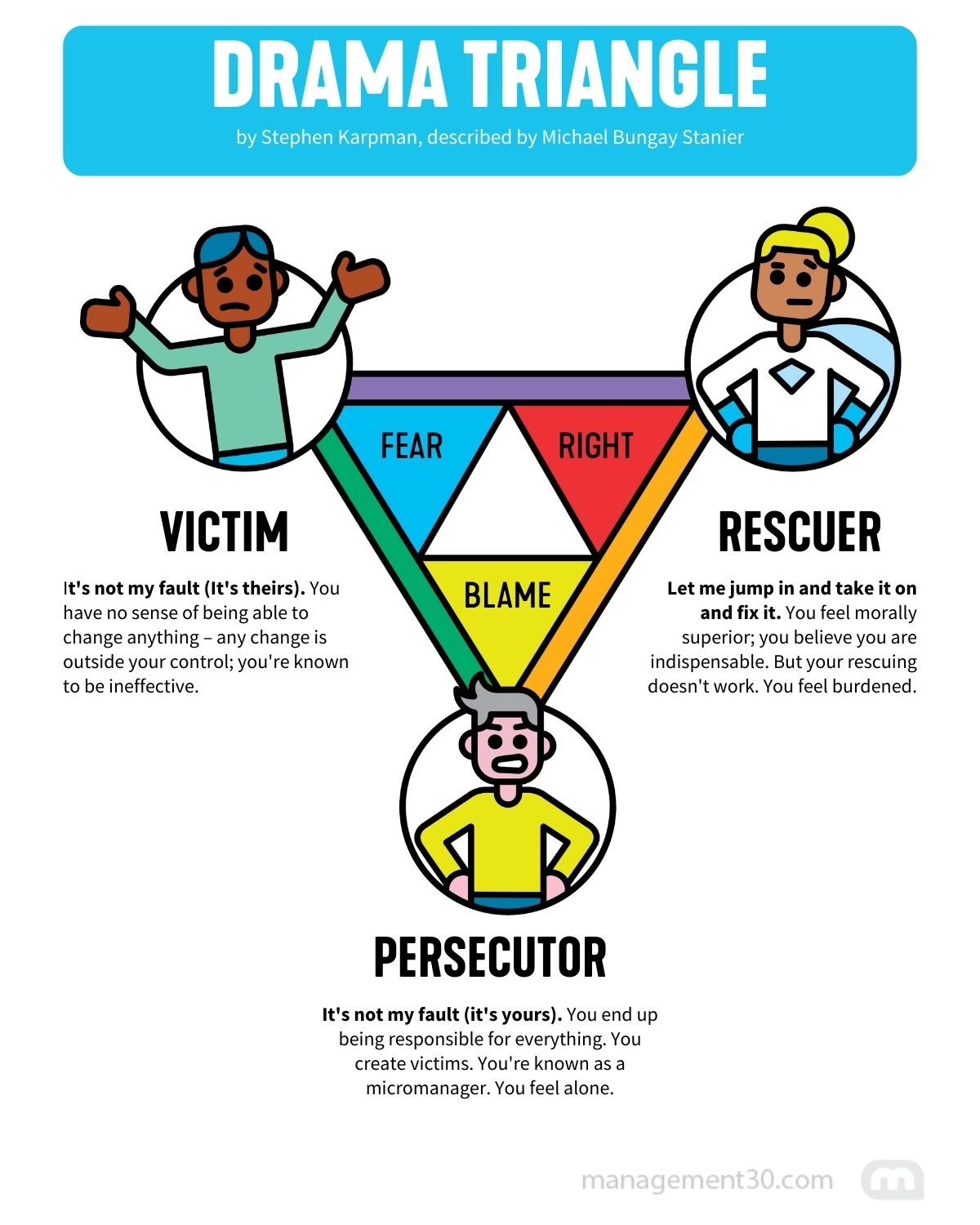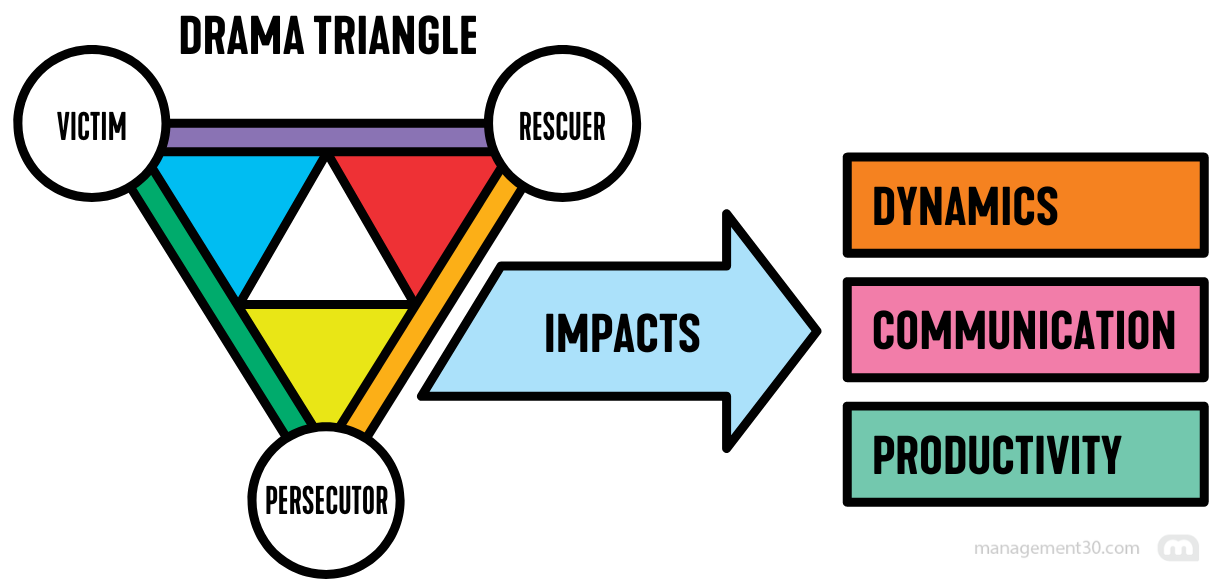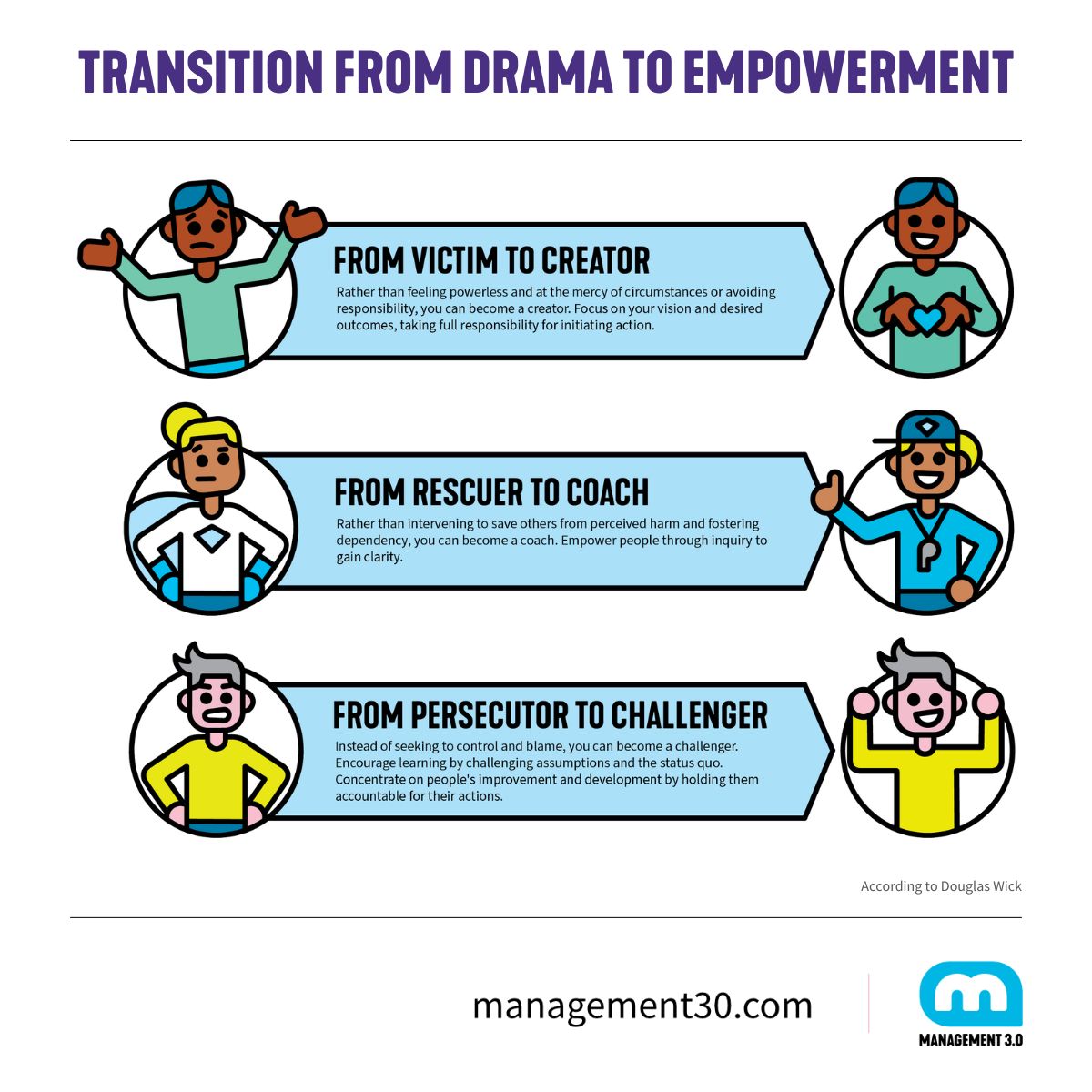The Drama Triangle illustrates unhealthy interpersonal dynamics involving three roles: Victim, Persecutor, and Rescuer. In leadership, these roles can impede team collaboration and growth. It’s crucial for leaders to recognize the Drama Triangle’s significance in averting conflicts, micromanagement, and burnout. Strategies include addressing triggers, fostering open communication, and enhancing emotional intelligence. This article, authored by Jens Thiemann, a Management 3.0 facilitator based in Germany with over 25 years of diverse management experience and the aim to create organizations and environments that simplify processes and unite people by inspiring and strengthening them, explores the Drama Triangle’s roles and how to break free from them.
As a manager, you will encounter conflicts within your team. These conflicts often involve three key roles: the Victim, the Persecutor, and the Rescuer, which collectively create the Drama Triangle. People frequently switch between these roles inadvertently. By understanding the Drama Triangle, you can spot these patterns, resolve conflicts, and work towards empowering your teams.
The Three Roles of the Drama Triangle
The Drama Triangle, first described in the 1960s by Stephen Karpman, a U.S. therapist and co-founder of transactional analysis, identifies three primary roles: the Victim, who feels oppressed and helpless; the Persecutor, who blames and criticizes; and the Rescuer, who tries to save the day without being asked. These roles are not fixed; individuals can shift between them in various situations. Understanding these roles offers a fundamental insight into conflict dynamics, helping identify behavioral patterns within teams and organizations.
In his book “The Coaching Habit,” Michael Bungay Stanier, an award-winning author, coach, and speaker, describes these roles as follows:
Victim | Persecutor | Rescuer | |
| Core Belief | “My life is so hard; my life is so unfair. Poor me.” | “I’m surrounded by fools, idiots, or people less good than me.” | “Don’t fight, don’t worry, let me jump in and take it on and fix it.” |
| Dynamic | “It’s not my fault (It’s theirs).” | “It’s not my fault (it’s yours).” | “It’s my responsibility (not yours).” |
| Benefit of playing this role | You have no responsibility for fixing anything; you get to complain; you attract rescuers. | You feel superior and have a sense of power and control. | You feel morally superior; you believe you are indispensable. |
| Price paid for playing the role | You have no sense of being able to change anything – any change is outside your control; you’re known to be ineffective. And no one likes a whiner. | You end up being responsible for everything. You create victims. You’re known as a micromanager. People do the minimum for you and no more. And no one likes a bully. | People reject your help. You create victims and perpetuate the Drama Triangle. And no one likes a meddler. |
| You feel stuck because | You have no power or influence. You feel useless. | You don’t trust anyone. You feel alone. | Your rescuing doesn’t work. You feel burdened. |

Considering McGregor’s Theory X, it’s interesting to note that the Persecutor feels validated in their view of the world (“the others are lazy, stupid workers”), further reinforcing the situation. However, we aim to avoid conflicts and break free from the Drama Triangle rather than support it.
To escape this cycle, it’s important to understand why Drama Triangles form.
What Causes the Drama Triangle?
The Drama Triangle often originates from unmet emotional needs, a lack of assertiveness or self-awareness, and poor communication skills. Additionally, the team or organizational culture can foster it. A culture of blame, fear, or unresolved conflicts encourages the Drama Triangle, highlighting situations where psychological safety is lacking.
The Drama Triangle in Leadership
In leadership, the Drama Triangle manifests as toxic behaviors such as blame, avoidance of responsibility, and micromanagement. Leaders can also fall into the roles of Victim, feeling overwhelmed by challenges; Persecutor, resorting to authoritarian tactics; or Rescuer, micromanaging their team to ‘save’ them. This behavior hinders team growth, innovation, and collaboration.
When leaders find themselves trapped in the Rescuer role, constantly taking on more responsibilities for their team, it can lead to frustration, exhaustion, and, in severe cases, burnout. Therefore, setting clear expectations and boundaries for your team and delegating tasks transparently is essential, a skill you can acquire through the Agile Team Leadership Workshop.



